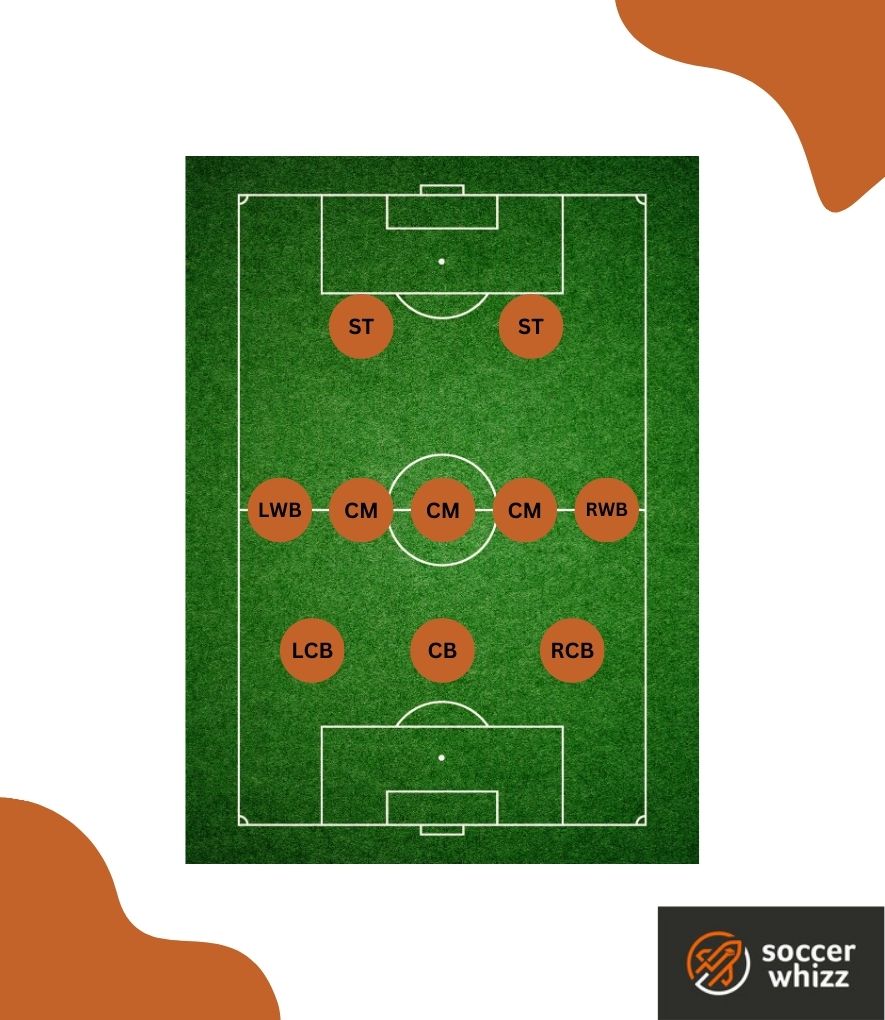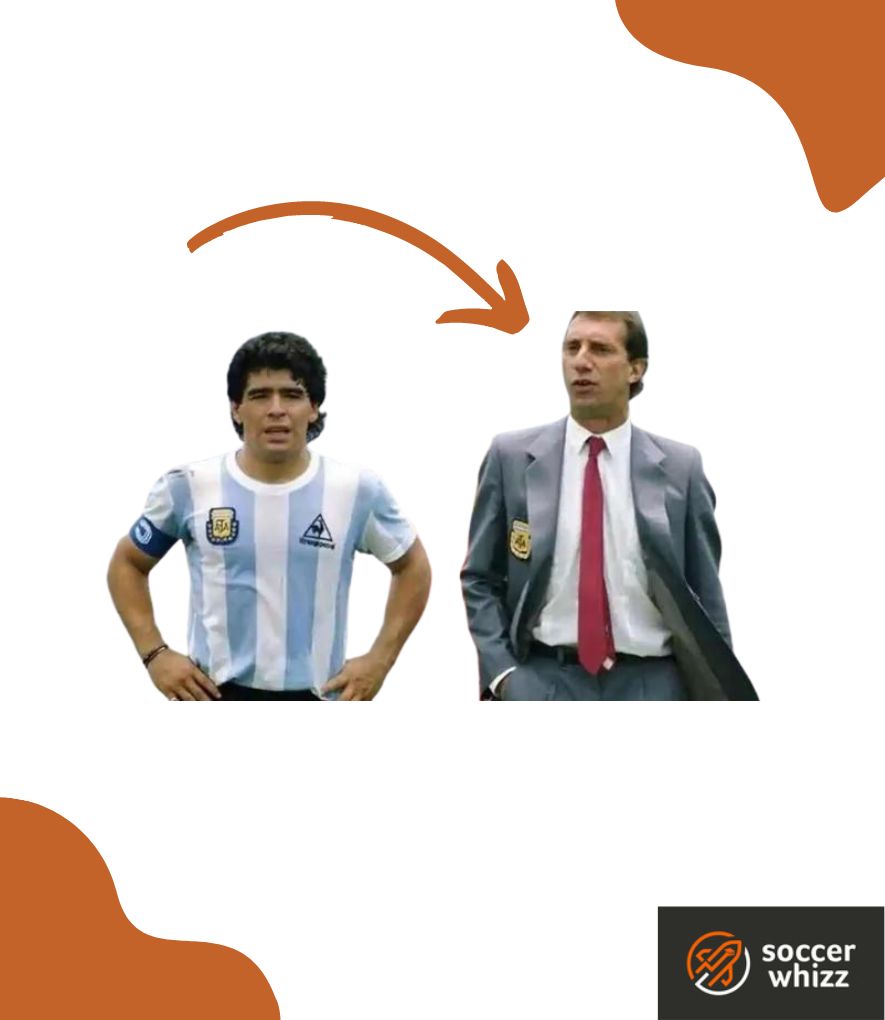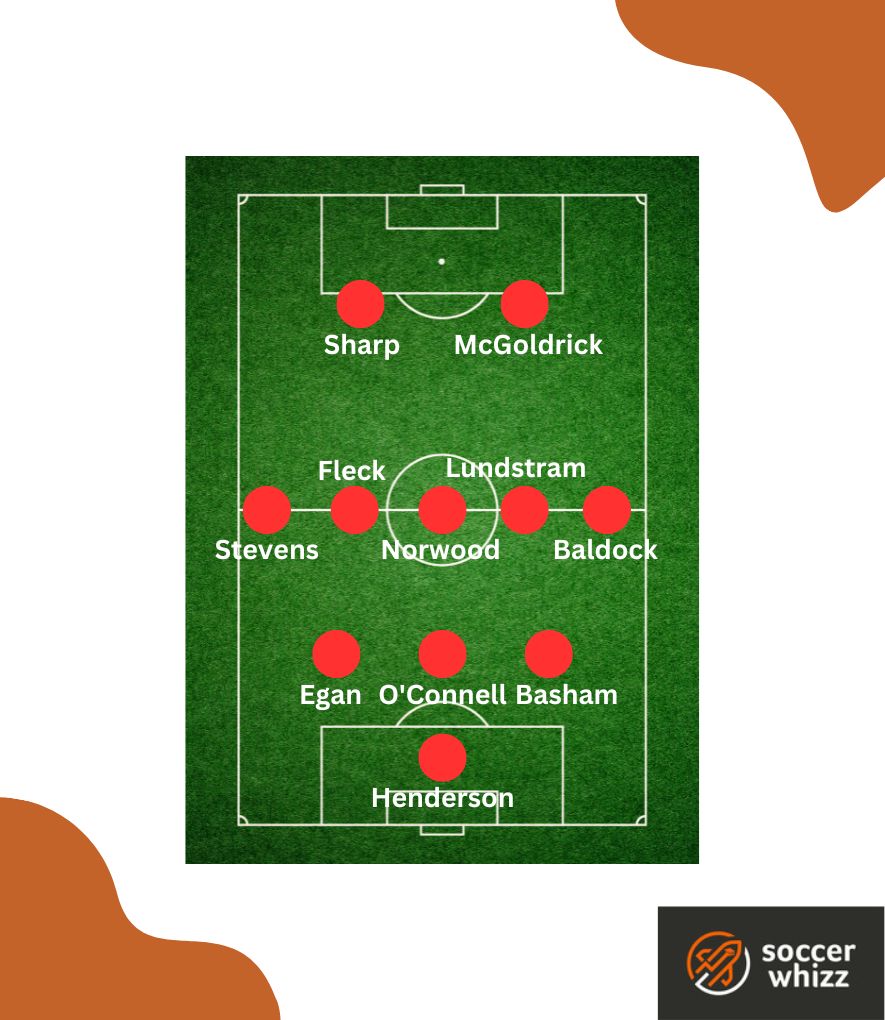In the ever-evolving landscape of soccer tactics, managers and coaches constantly seek innovative approaches to gain a competitive edge.
One formation that has garnered significant attention and proved to be a game-changer on the field is the 3-5-2 formation.
With its fluidity, balance, and tactical versatility, this strategic setup has revolutionized the way teams approach the beautiful game.
Traditionally, soccer formations have often revolved around the use of four defenders, but the 3-5-2 formation challenges this convention by fielding three central defenders, five midfielders, and two strikers.
Here’s how this shape looks like:

Now, this unique tactical structure allows teams to achieve a delicate equilibrium between defensive solidity and attacking prowess, presenting a formidable challenge for opponents to overcome.
Throughout this article, we will delve into the intricacies of the 3-5-2 formation, examining its tactical principles, the roles and responsibilities of each position, and the successful implementation by top teams.
From analyzing the strengths and weaknesses to understanding the key factors for success, we will explore the various nuances that make the 3-5-2 formation a tactical gem in modern soccer.
- Who invented the 3-5-2 formation?
- How does a 3-5-2 formation work?
- What are the advantages of a 3-5-2 formation?
- What are the disadvantages of a 3-5-2 formation?
- Which managers usually employ a 3-5-2 formation during matches?
- What is the best formation to play against a 3-5-2 shape?
- Is the 3-5-2 formation a defensive or offensive shape?
- Concluding thoughts
Who invented the 3-5-2 formation?
The origins of the 3-5-2 system can be attributed to the innovative thinking of Argentine coach Carlos Bilardo.

Renowned as the mastermind behind Argentina’s victorious 1986 World Cup campaign, Bilardo devised the 3-5-2 formation as a strategic solution to maximize the potential of his star player, Diego Maradona.
Carlos Bilardo ingeniously crafted the 3-5-2 system with a primary objective in mind: creating ample space in the forward areas for Maradona to capitalize on.
By deploying three central defenders at the back, Bilardo ensured defensive stability while freeing up additional room for Maradona to showcase his exceptional skills and exploit the gaps in opposition defenses.
This tactical innovation proved to be a game-changer for the Argentine national team.
The 3-5-2 formation allowed Maradona to operate in a more advanced role, granting him the freedom and support required to wreak havoc on opponents.
Bilardo’s strategic vision and adaptation of the formation enabled Maradona to excel, ultimately leading Argentina to World Cup glory in 1986.
How does a 3-5-2 formation work?
The foundation of this formation lies in a contemporary back three setup.
Comprising three central defenders, this defensive line is complemented by the inclusion of two versatile wing-backs – a left wing-back (LWB) and a right wing-back (RWB).
In instances where the team adopts a deep defensive stance, these wing-backs seamlessly transition to become part of a compact back five.
Here’s a great video explainer:
However, in most cases, the wing-backs operate as the widest components of a midfield consisting of five players.
Positioned between them are three central midfielders, and the organization of this midfield trio can vary.
It may feature a flat three, or on different occasions, one central defensive midfielder assuming a deeper role while two central defensive midfielders protect the center-backs, with a central attacking midfielder (CAM) offering a creative outlet in front of them.
Lastly, the attacking aspect of the 3-5-2 formation revolves around a striking partnership.
These two strikers possess the ability to press the opposition’s back four, regain possession in advanced areas, and seamlessly link up with the fluid midfield behind them.
What are the advantages of a 3-5-2 formation?
The 3-5-2 formation boasts remarkable flexibility, which serves as one of its key strengths.
This adaptability is primarily facilitated by the wing-backs, who play a pivotal role in seamlessly transitioning between defensive, midfield, and attacking positions.
While their primary focus leans towards providing offensive contributions, the likes of Reece James from Chelsea exemplify how wing-backs can become a relentless attacking force, posing immense challenges for opponents to contain.
Unlike the 4-3-3 formation, having the full-backs venture forward in the 3-5-2 doesn’t leave defensive areas excessively exposed, thanks to the presence of three central defenders offering additional coverage.
Another notable advantage of the 3-5-2 formation lies in its ability to dominate possession and create numerical overloads in various areas of the pitch.
With three central midfielders, this shape provides an ideal platform for controlling the midfield battle, fostering fluidity and moments of ingenuity.
It’s not uncommon to witness one of the central defenders carrying the ball forward into midfield, catching the opposition off-guard and causing confusion in terms of marking responsibilities.
Sheffield United, a newly promoted Premier League side during the 2019-20 season, showcased the effectiveness of overlapping center-backs, ultimately finishing 9th.

The 3-5-2 formation permits numerous variations in build-up play.
The back three can progress the ball centrally or exploit the wings, where the wing-backs hug the touchline, finding ample space to operate.
Further up the pitch, the two strikers enhance the team’s flexibility.
They have the capability to drop back into midfield, linking up with the creative players, or they can create chaos by relentlessly pressing the opposition’s central defenders in tight one-on-one situations.
What are the disadvantages of a 3-5-2 formation?
One of the challenges associated with the 3-5-2 formation lies in the potential congestion within the midfield.
This issue becomes more prominent if the wing-backs adopt a narrower positioning.
In such scenarios, teams may find themselves vulnerable to opposition counter-attacks, with the back three defenders forced into one-on-one defensive situations.
Another vulnerability arises when the team’s wing-backs frequently surge forward and prioritize their attacking duties.
This offensive focus can leave gaps behind them, creating difficulties in defending wide areas.
Consequently, the success of the 3-5-2 formation heavily relies on well-drilled and disciplined players who possess a deep understanding of their specific roles and responsibilities.
Due to its complexity, the 3-5-2 formation is primarily prevalent at the highest levels of the game, where coaching expertise is paramount.
Which managers usually employ a 3-5-2 formation during matches?
Here are a few names worth mentioning:
1. Antonio Conte
One of the notable figures associated with the 3-5-2 formation and its successful implementation is Antonio Conte.

Widely recognized as a prominent advocate of this tactical system, Conte has prominently employed it during his managerial career, particularly during his tenures at Juventus, Chelsea, and Inter Milan, all of which witnessed domestic title victories under his guidance.
Conte consistently showcases a preference for quick and enduring full-backs, molding them to suit the demands of his favored formation.
Players such as Achraf Hakimi, Marcus Alonso, Victor Moses, and Kwadwo Asamoah have epitomized the qualities sought by Conte, demonstrating the crucial role they play within his teams.
The ability of these wing-backs to swiftly transition up and down the pitch is fundamental to their effectiveness in Conte’s tactical structure.
2. Thomas Tuchel
Thomas Tuchel has garnered a reputation for his adeptness in utilizing the 3-5-2 system at the highest echelons of soccer.

This tactical approach served as his preferred formation at Chelsea, often accompanied by a 3-4-3 setup.
However, Tuchel’s affinity for the 3-5-2 formation extends beyond his time at Chelsea; he has previously employed this system during his managerial spells at Paris Saint-Germain and Borussia Dortmund.
During his tenure at Paris Saint-Germain, Tuchel showcased his distinctive interpretation of the 3-5-2 shape.
In this formation, he utilized Neymar as a central attacking midfielder, assuming the role of a number 10.
Neymar’s positioning enabled him to advance beyond the more defensively-oriented central midfielders, Marquinhos and Rabiot, and provide support to the team’s front two.
This tactical adjustment proved particularly effective for the Parisian team in the Champions League, where Tuchel’s back three instilled defensive solidity while creating valuable space for the forward players to thrive.
3. Simone Inzaghi
Simone Inzaghi has masterfully transformed Inter’s 3-5-2 formation into a meticulously organized system, showcasing exceptional defensive solidity, seamless transition play, and a relentless attacking mindset.

The striking partnership exemplifies the ideal synergy within the team, representing the only position subject to rotation in the Italian squad.
Inzaghi tactically adjusts the selection based on the specific demands posed by each opponent, ensuring maximum effectiveness.
His team excels in ball possession, skillfully utilizing the movement of the wing-backs as a cornerstone of their strategy.
These dynamic players take on significant responsibility for progressing the ball and creating space.
The right wing exhibits a rapid and direct approach, generating swift attacking moves, while the left flank adopts a more deliberate and patient style of play.
What is the best formation to play against a 3-5-2 shape?
The 4-2-3-1 formation presents a strategic advantage that can effectively exploit the zonal defending system utilized in the 3-5-2 formation.
This advantage is achieved through precise passing and intelligent movement, compelling the opposition to shift from side to side.
By utilizing high-quality passing and movement, teams can manipulate the defensive structure of the 3-5-2 and create openings for attacks.
Effectively countering the 3-5-2 formation requires a keen focus on matching its positional fluidity and capitalizing on the flexibility it offers.
This involves leveraging the formation’s adaptability to create numerical overloads in attacking areas, overwhelming the opposition’s defense and creating favorable scoring opportunities.
In terms of tactical matchups, it is worth noting that mirroring the 3-5-2 formation is one of the popular approaches when facing it.
By structuring the team in a similar manner, teams can occupy the same areas of the pitch and have an additional defender at the back.
However, a straight man-for-man matchup can pose challenges if the opposing team possesses superior individual quality, as they can exploit weaker defenders in one-on-one situations.
Is the 3-5-2 formation a defensive or offensive shape?
In broad terms, the 3-5-2 formation is often regarded as a defensive setup due to its deployment of three center backs and a compact midfield consisting of three central midfielders.
This configuration establishes a solid and tightly-knit core for the team.
Nonetheless, with the presence of skilled and agile wing-backs, this defensive foundation can swiftly transform into a formidable offensive force.
Concluding thoughts
The 3-5-2 formation stands as a versatile and tactically intriguing system in the world of soccer.
Throughout this article, we have explored its defensive strength, midfield dominance, and attacking potential.
The formation’s ability to adapt and shift between defensive solidity and offensive potency makes it a captivating strategic option for teams looking to gain a competitive edge.
However, as with any formation, the 3-5-2 comes with its own set of challenges and considerations.
Adapting to different opponents, maintaining defensive stability, and ensuring proper coordination between players are essential for the successful execution of this tactical shape.
If you found this article insightful, then you should probably check out a few of our other tactical thought-pieces such as our analysis of the 3-4-2-1 soccer formation and our insight into the 3-4-3 formation.
If you enjoy the content that I create and would like to buy me a coffee, then I’d really appreciate it!
Any money that I earn through this donation will be re-invested into more content for this website.
Additionally, by sending in a donation you’ll also receive a copy of my recently released 190+ page eBook on Soccer Ball Care, as well as be subscribed to our mailing list where you’ll be regularly informed on the latest developments concerning the Soccer Whizz blog.
- Future Icons: Europe’s Emerging Midfield Maestros Set for Glory - December 4, 2023
- Kickstarting a Revolution: How Soccer Transformed the United States Over the Last Four Years - October 7, 2023
- 4-1-4-1 Soccer Formation [Analysis] - September 23, 2023

